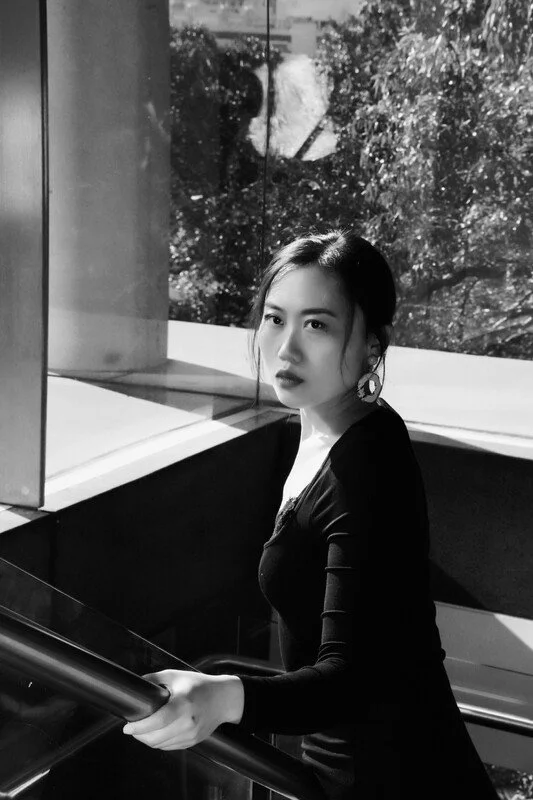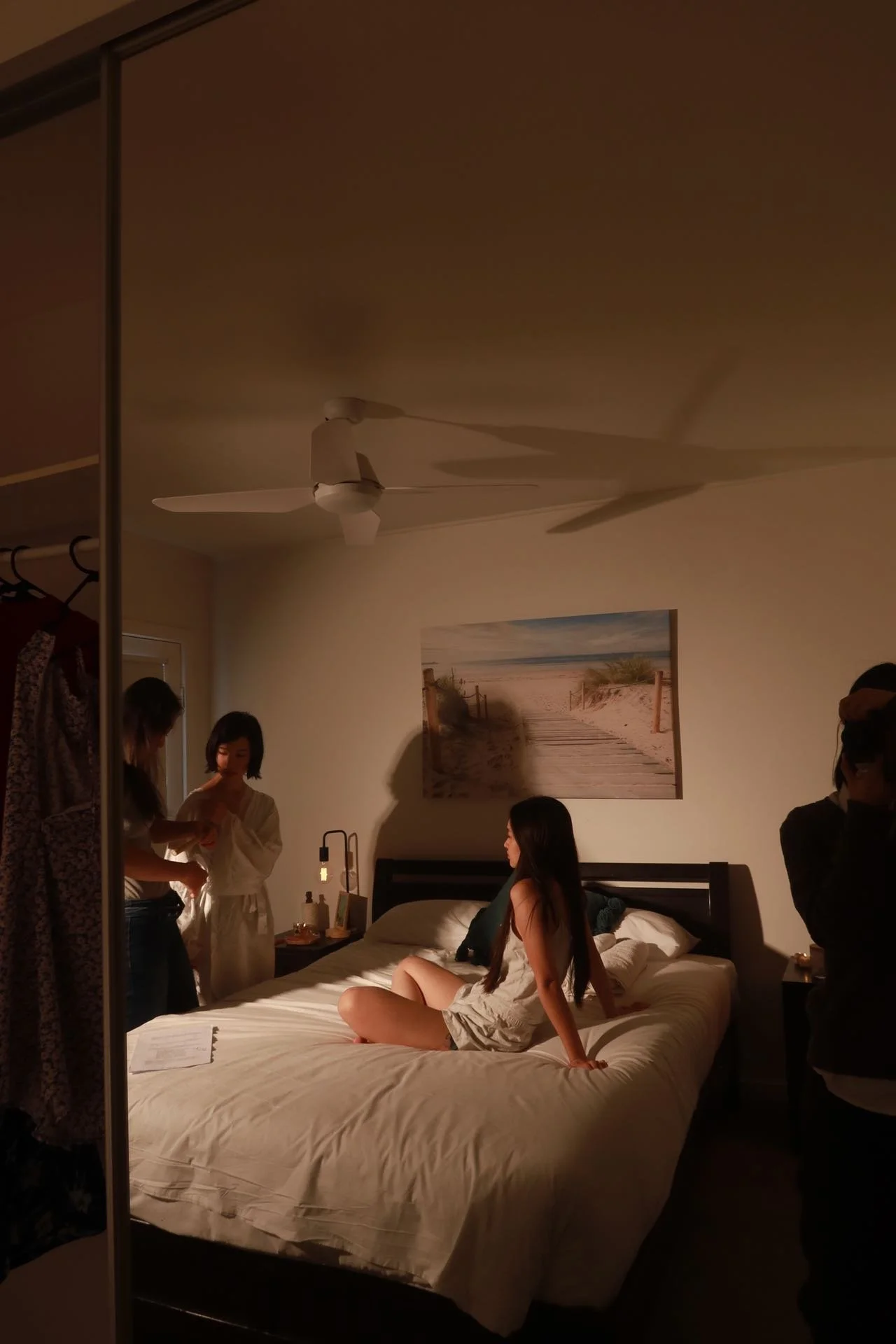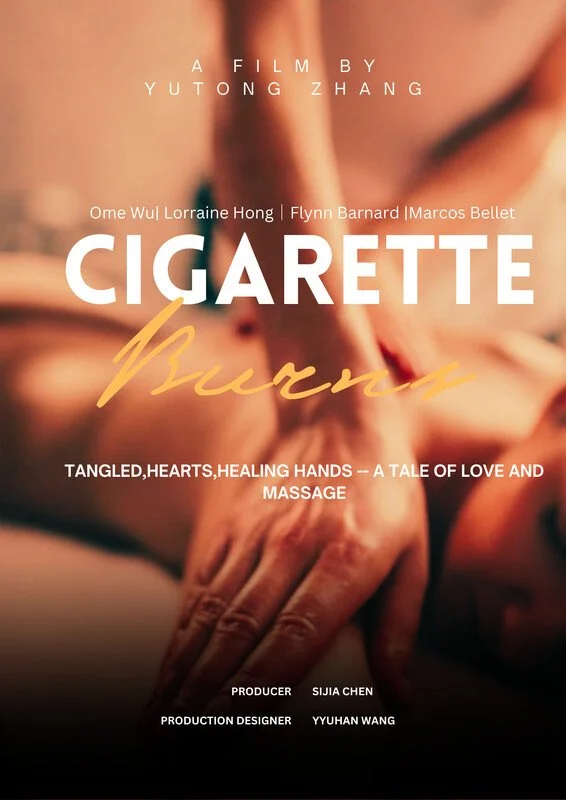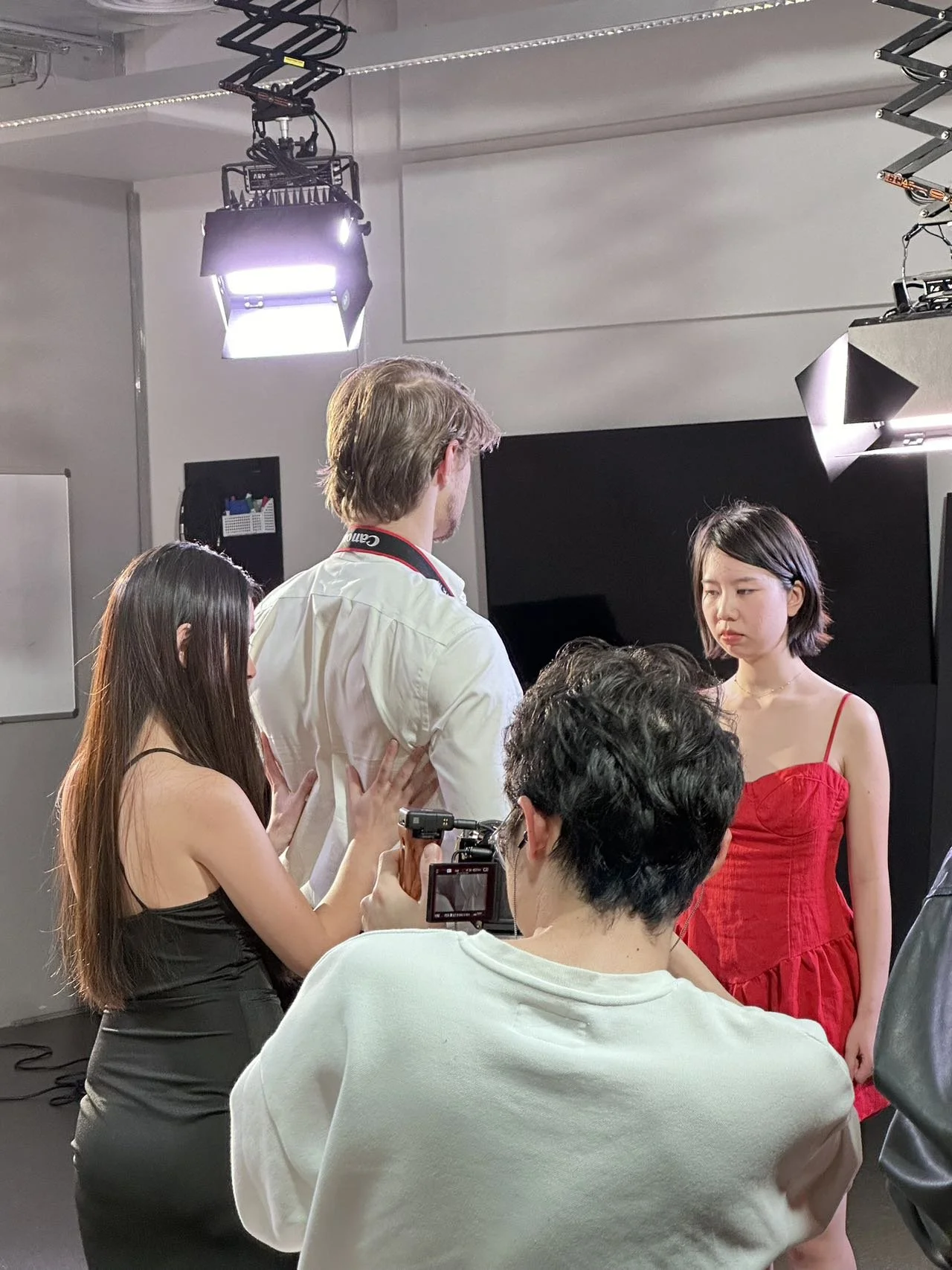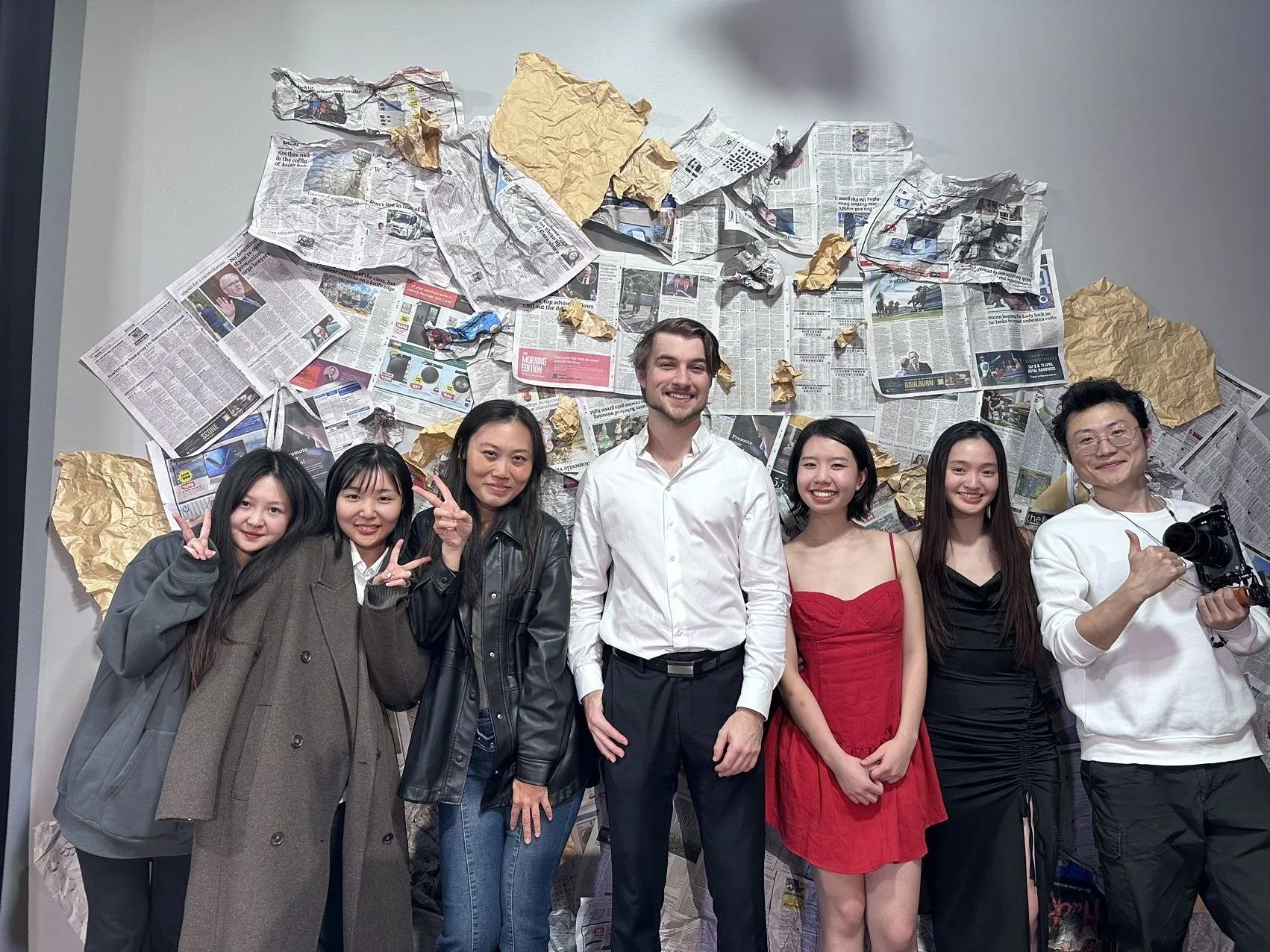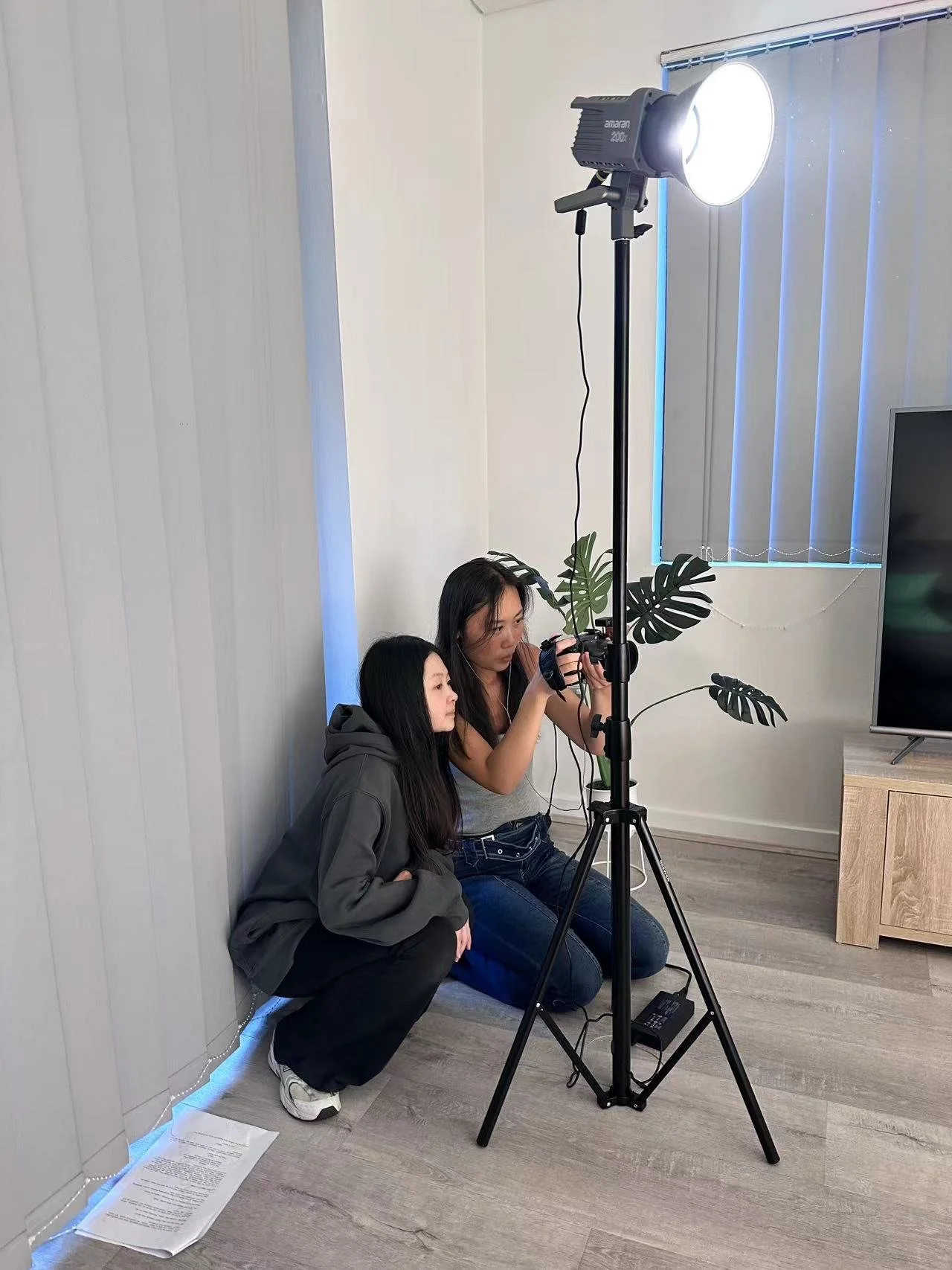Blurring Boundaries on love and identity with Yutong Zhang
Welcome Yutong aka Jessica, we are very excited to have you today with us to discuss about your work.
Who is Yutong Zhang and how did the passion for creating begin?
Yutong Zhang is a passionate filmmaker whose love for cinema began in childhood, inspired by frequent trips to the theater with her mother. Growing up in a town where cinema wasn't widely accessible, these outings involved traveling by bus over long distances, which made them even more special. Alongside her cinematic experiences, Yutong cherished reading and creative writing, actively participating in numerous workshops as part of her extracurricular activities. As she pursued her studies in media and journalism at university, Yutong was drawn to documentary production. However, she found the traditional “fly on the wall” narrative style limiting. To deepen her understanding of filmmaking, she attended workshops in Beijing, marking the beginning of her filmmaking journey and igniting her desire to tell stories through film.
Can you tell us about your previous work ?
My previous work primarily focuses on non-fiction films, reflecting my background in media and journalism. I have a passion for collaborating with artists, exemplified by one of my documentaries featuring a Sydney-based independent musician. This film was selected for screening at the Melbourne Lift-Off Film Festival. In this documentary, I explored how the musician strives to create music that resonates with his unique style while also navigating the realities of the music industry. It highlights his positive, creative, and passionate approach to his musical journey. Through this project, I aimed to capture the vibrant essence of Australian music culture, aligning perfectly with Sam, the Aussie musician's temperament.
Cigarette Burns navigates love, cultural identity, and belonging through the lens of a love triangle. What inspired you to tell this story through these particular relationships?
My inspiration for "Cigarette Burns" stems from my ethnic background and upbringing. Growing up, I was influenced by the prevailing perception of Western countries—particularly European nations and America—as idealized places of success, inclusivity, and opportunity. Many Chinese families viewed these countries as the pinnacle of achievement, fostering my mother's desire to immerse me in English language and culture in hopes that I would eventually experience Western education. This environment often left me feeling confused and displaced from my birthplace. My sense of disorientation intensified when I moved to Toronto, where I struggled to find balance in my self-identity. The outbreak of the pandemic exacerbated my feelings of fear and confusion, particularly as anti-Asian sentiment surged, making me and others feel targeted and vulnerable. These overwhelming emotions deepened my longing for love and connection. After relocating to Sydney and studying film, I felt compelled to express my years of confusion and exploration through the lens of a love triangle, addressing themes of love, cultural identity, and belonging.
CONVERSATION ABOUT: ‘‘Cigarette Burns’’
The film incorporates traditional Chinese elements, like "Tea Art" and "Moxatherapy." What symbolic role do these cultural practices play in the story and Lily’s personal journey?
The traditional Chinese elements in the film, such as "Tea Art” and "Moxatherapy," serve as symbolic reflections of the characters' identities and their emotional journeys. These practices often carry labels that connect them to their ethnic background, even if they do not genuinely resonate with those identities. This sense of detachment can become a burden, creating an invisible wall that not only hinders self-understanding but also obstructs the capacity to feel love. Moxatherapy plays a significant role in Lily’s journey. Its similarities to cigarettes—both in shape and the act of lighting them—connects the two elements. Moxatherapy also evokes the essence of incense, providing a sense of solemnity and warmth, creating an atmosphere of calm and reflection. Moreover, it is believed to have "healing" powers, allowing for the flow of "Qi" and promoting healthy blood circulation.
This healing aspect represents a gateway for Lily’s self-discovery and reconciliation, ultimately leading her to the realization of love. However, the key to this transformation lies with Shelly. Lily’s sudden and irresistible crush on Shelly is ignited by the inexplicable healing energy that accompanies her, offering the love and tranquility she has long sought.
Can you talk about the visual and symbolic significance of the title, Cigarette Burns? How does it reflect the themes of the story and the characters' inner struggles?
The title "Cigarette Burns" embodies a profound pain that penetrates deep into the characters' souls, representing experiences that cannot be erased. In this film, this pain stems from the feelings of misfit and displacement caused by the conflict between cultural expectations and personal identity for both Lily and Shelly. The imagery of cigarette burns symbolizes the scars left by their struggles, highlighting how these wounds shape their interactions and emotional landscapes throughout the story. This scar is evident in both characters: while Lily conceals her pain, Shelly openly displays hers. This contrast allows Lily to unconsciously recognize and become attracted to Shelly, drawn to the vulnerability that Shelly embodies. Ultimately, the title encapsulates their intertwined journeys of healing and discovery—a reflection of their struggles to connect with themselves and each other.
What were some of the most difficult visual or stylistic choices you made in the film, and how did you overcome the challenges they presented?
One of the most challenging scenes to create was when Shelly practices Moxatherapy for Lily on the bed. The limited space made it difficult to establish the tension between them. My intention was to portray a power dynamic where both characters are evenly matched yet competitive, reflecting their complex relationship. Lily, being sensitive and stressed, seeks Shelly’s help without fully understanding her dual identities. Meanwhile, Shelly desires to prove her genuine healing abilities beyond being just a pretty face. To convey this tension, I used a handheld low-angle camera to create a voyeuristic effect. I framed the shot from behind Lily, focusing on the back of her head while Shelly remained in the background. This approach effectively captured the tension without explicitly showing their faces, revealing the standoff and power dynamics at play. Additionally, the use of mirrors and cross-axis editing further intensified the scene.
What reactions do you hope to elicit from audiences watching your project ?
In creating this story, three key themes emerged: love, massage, and healing. I hope to elicit deeply emotional reactions from the audience, encouraging them to immerse themselves in the experiences of the characters rather than overanalyzing the narrative. The film is designed to evoke sentiments of connection, vulnerability, and the complexities of relationships. I want viewers to feel the nuances of each moment, allowing themselves to resonate with the characters’ journeys and the transformative power of love and healing.
In future projects, do you plan to explore similar genre intersections, or are there other genres you're eager to explore ?
In my future projects, I am eager to continue exploring themes of love and relationships, as these are areas that deeply resonate with me. I see myself as a director driven by intuition and emotion rather than purely logical analysis, though I do incorporate a more analytical approach when reviewing my stories after the initial draft. Additionally, I aspire to integrate other art forms, such as music and dance, into my films to express abstract yet passionate emotions beyond verbal communication. I believe that verbal expression can often feel rigid and formulaic compared to the raw and natural qualities of music and dance. In today's modern world, I perceive a growing numbness in how people connect, with curiosity and vitality diminishing. Interactions seem increasingly robotic, and conversations often lack depth and sensitivity. Through my work, I aim to awaken our inherent passion and emotional awareness, using diverse artistic expressions to reclaim the richness of human experience.
Can you tease any upcoming projects or themes you're excited to explore in your future works?
I am excited to explore the realm of musical film while continuing to focus on themes of love, relationships, and unconventional romance. As I mentioned earlier, my goal is to revive our inherent sensitivity and passion through various art forms. I believe cinema has a unique power to provide a platform for diverse artistic expressions while being enriched by these different art forms and characters. For me, cinema shines through the stories it tells but also remains humble; it often hides behind the curtain, celebrating those who take the spotlight. I aim to keep experimenting with different artistic elements to expand and enrich this "stage," allowing for a more vibrant and multidimensional experience. By intertwining music, dance, and visual storytelling, I hope to create works that resonate with audiences on a deeper emotional level.
This marks the conclusion of the interview featuring our esteemed artist, Yutong Zhang a.k.a Jessica Zhang. Our community is growing steadily, with a continuous influx of skilled filmmakers and screenwriters joining us. Explore our other interviews, and consider scheduling one for yourself to showcase your creative endeavors.

